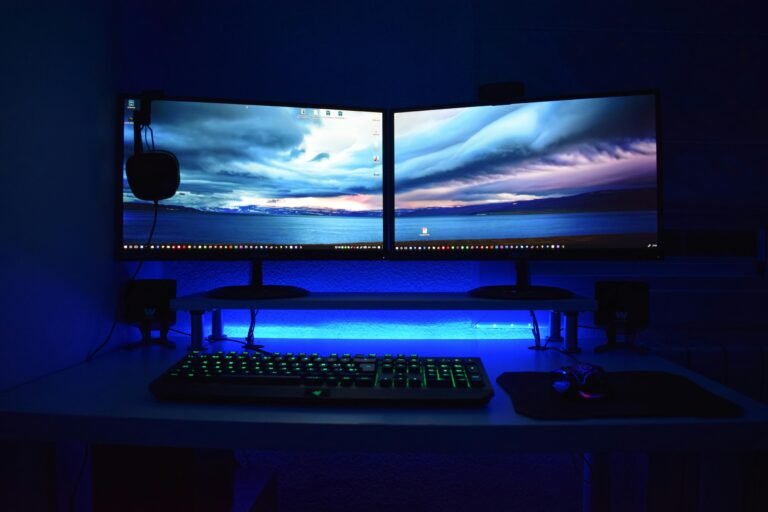
Whether you’re an avid gamer or a casual player, learning how to optimize your computer for gaming performance is essential to ensure a smoother and more enjoyable experience. In this guide, we’ll walk through some quick and efficient ways to boost your gaming performance without breaking the bank. By following these steps, you’ll get the most out of your system and elevate your gameplay to the next level.
1. Update Your Drivers
Before diving into hardware upgrades or software tweaks, the first step in how to optimize your computer for gaming performance is ensuring that all your drivers are up to date. This is particularly important for your graphics card (GPU), motherboard (chipset), and network drivers, as these can greatly influence gaming performance.
How to do it:
- Go to your GPU manufacturer’s website (NVIDIA, AMD, Intel) and download the latest drivers.
- Update your motherboard drivers through the manufacturer’s support page.
- Update network drivers to ensure low-latency gaming experiences.
2. Adjust In-Game Settings
Most modern games come with a variety of graphical settings that can be fine-tuned to improve performance. You can trade visual quality for better frame rates by lowering certain settings.
Key settings to adjust:
- Resolution: Lowering the resolution can drastically increase performance.
- Texture Quality: Reducing texture details can free up GPU resources.
- Anti-Aliasing: Turning this off can boost frame rates.
3. Upgrade Your Hardware
If your system is older or has bottlenecks, upgrading your hardware is a key step in how to optimize your computer for gaming performance. The most effective upgrades typically include the graphics card (GPU), CPU, and RAM.
Upgrade suggestions:
- GPU: A powerful graphics card is crucial for gaming performance. Consider upgrading to one with more VRAM.
- CPU: A modern multi-core processor will prevent slowdowns during intense gaming sessions.
- RAM: 16GB of RAM is often the sweet spot for modern gaming.
4. Overclocking Your GPU and CPU
For users who want to squeeze every ounce of performance out of their system, overclocking can be a great solution. By pushing your CPU and GPU beyond their base clock speeds, you can achieve better performance. However, this should be done with caution, as improper overclocking can lead to overheating or system instability.
How to do it:
- Access your system’s BIOS or UEFI settings during boot-up. Most modern systems offer overclocking options directly in the BIOS.
- Increase your CPU multiplier and GPU clock speeds incrementally.
- Regularly check your system’s temperatures to ensure they stay within safe limits.
5. Enable Game Mode in Windows
Windows has a built-in Game Mode feature that optimizes system resources for gaming. When activated, Game Mode ensures that your CPU and GPU prioritize gaming performance by limiting background processes.
How to enable Game Mode:
- Go to Settings > Gaming > Game Mode, and toggle it on.
6. Optimize Your Storage
Slow load times can be frustrating, and having enough free space on your storage drive is critical. To optimize gaming performance, it’s best to install your games on a Solid State Drive (SSD) rather than a traditional Hard Drive (HDD).
How to do it:
- If possible, install your most-played games on an SSD to benefit from faster load times.
- Regularly clear out unnecessary files to free up storage.
7. Keep Your System Clean and Cool
Proper airflow and cooling are essential for maintaining optimal gaming performance. Overheating can cause thermal throttling, which slows down your system. Cleaning dust from fans and ensuring that your case has proper airflow is crucial.
How to do it:
- Regularly clean your PC’s interior to prevent dust buildup.
- Invest in better cooling solutions, such as extra case fans or a more efficient CPU cooler.
Pros and Cons of Optimizing Your Computer for Gaming Performance
Pros:
- Improved Frame Rates: Expect a smoother gaming experience with higher frame rates.
- Faster Load Times: Optimizing storage and hardware can reduce loading screens significantly.
- Better Visual Quality: Adjusting in-game settings can give you the perfect balance between visuals and performance.
- System Longevity: Regular maintenance, such as cooling and driver updates, will extend the life of your computer.
Cons:
- Cost: Some hardware upgrades can be expensive, especially if you’re upgrading your GPU or CPU.
- Time-Consuming: Overclocking and tuning settings may take some trial and error to perfect.
- Risk of Overheating: Overclocking and improper cooling can lead to overheating and potentially damage components.
Conclusion
How to optimize your computer for gaming performance involves a combination of software tweaks, hardware upgrades, and regular maintenance. Whether you’re a competitive gamer or just looking to improve your overall experience, these tips will help you get the most out of your system. By staying up to date with drivers, optimizing in-game settings, and investing in hardware upgrades, you can ensure that your PC performs at its peak during your gaming sessions.
